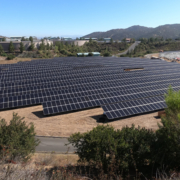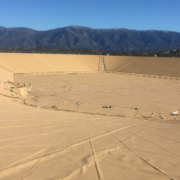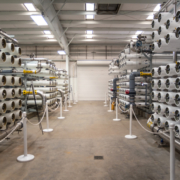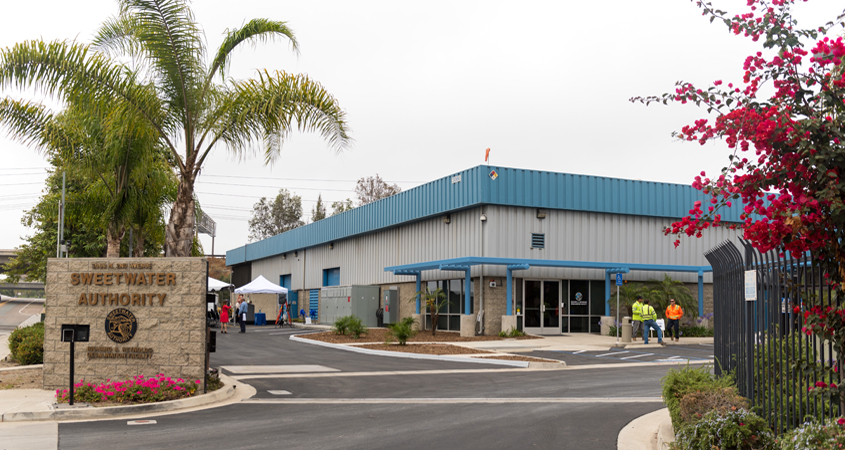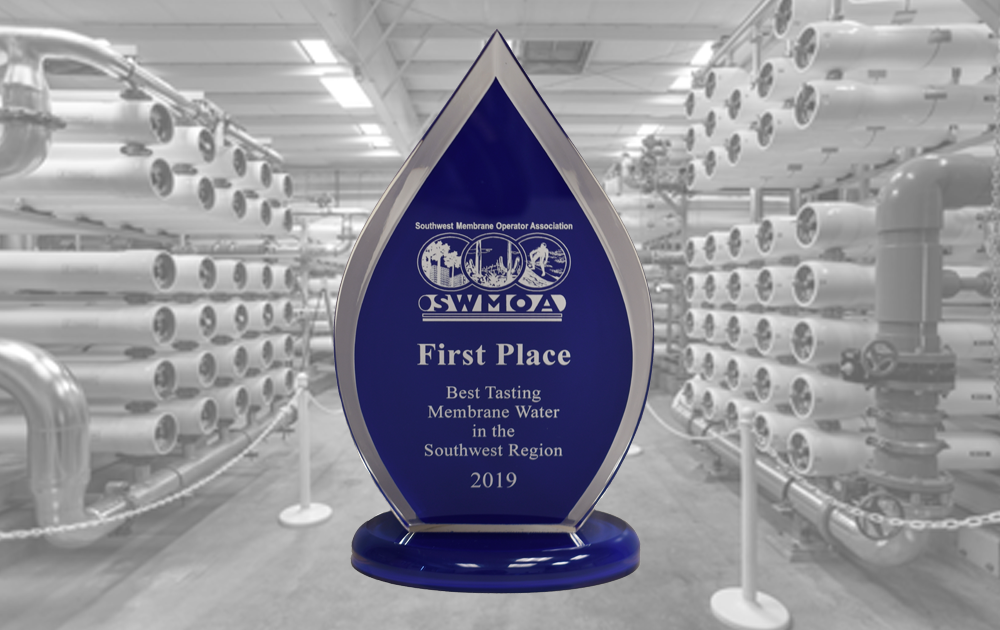Solar Project Saves Energy, Costs for Vallecitos Water District
The Vallecitos Water District is pursuing greater use of renewable resources, increasing capacity to the electrical grid, and reducing long term operational costs with an innovative solar power project.
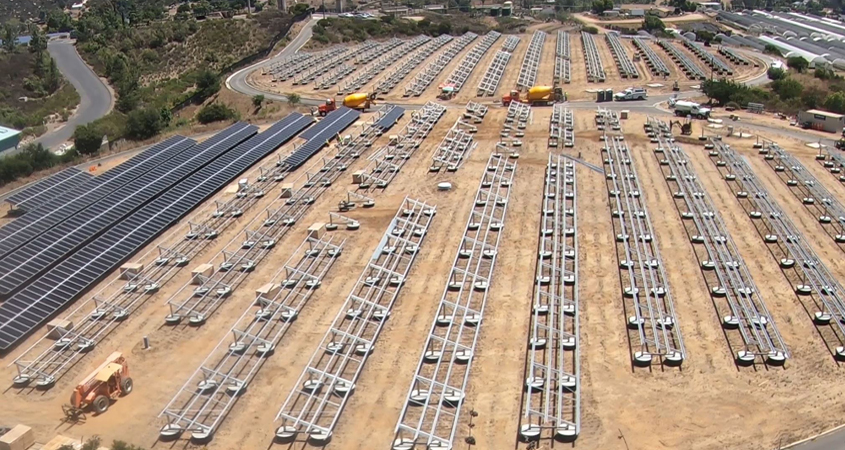
The west solar array is installed on top of the Vallecitos Water District’s 33-million gallon reservoir with 2,300 solar modules and eight 80 kw inverters. The east array is located on top of the 40-million gallon reservoir with 2,900 modules with ten 80 kw inverters. Photo: Vallecitos Water District
In 2017, the Vallecitos Water District Board of Directors agreed to pursue development of districtwide renewable power sources using existing open space to benefit the District and its ratepayers. The District worked with solar consultants Terra Verde Renewable Partners to evaluate and study the feasibility of three solar port locations. Two projects are now moving forward; two arrays at the pair of Vallecitos owned reservoirs in Twin Oaks, and an array at the (sewer) Lift Station #1, located on San Marcos Boulevard.
The projects are structured under a Power Purchase Agreement. A solar provider designs, builds, and maintains systems for 25 years. In turn, the District receives a reduced electricity rate from SDG&E over the 25-year term at the District’s 13 highest use meters. The District will become owners of the solar system after the 25-year maintenance term expires. No capital investment is required from the District.
“The project is a great benefit to Vallecitos customers,” said Ryan Morgan, Capital Facilities Senior Engineer. “Through our export of power into the electrical grid, we receive bill credits on these power exchanges. The District benefits directly through reduced power costs, and that cost savings is passed down to the customer ultimately in reduced water and sewer rates.”
Multiple stakeholders working together
Vallecitos Water District provides the project sites, working with SDG&E, the solar provider team, the District’s contractors, and the solar maintenance operator. The District’s water professionals work with solar power experts to guide the project through planning, design, and construction as a team.
Over the 25-year term, the District will benefit from a reduced electrical rate of 7.79 cents per kilowatt-hour (kWh) at its 13 highest use meters. It will also receive a rebate or credit on its export of power to the electrical grid. Savings to the District over 25 years are estimated at $8.3 million, which ultimately results in reduced water and sewer rates for customers. District staff locked in the maximum federal rebate by launching the project in 2019 and meeting a narrow window for grant funding.
Solar panels installed on top of two reservoirs
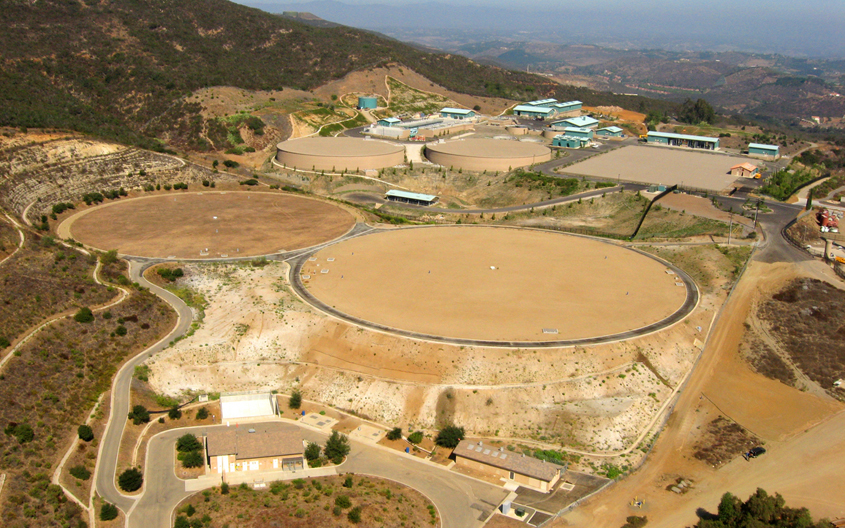
The Twin Oaks Reservoir dual solar panel array sites prior to installation. Photo: Vallecitos Water District
The west solar array is installed on top of the District’s 33-million gallon reservoir with 2,300 solar modules and eight 80 kW inverters. The east array is located on top of the 40-million gallon reservoir with 2,900 modules with ten 80 kW inverters. The total production is roughly 3.6 MWh annually, enough to power 340 homes.
Local power conservation remains vital
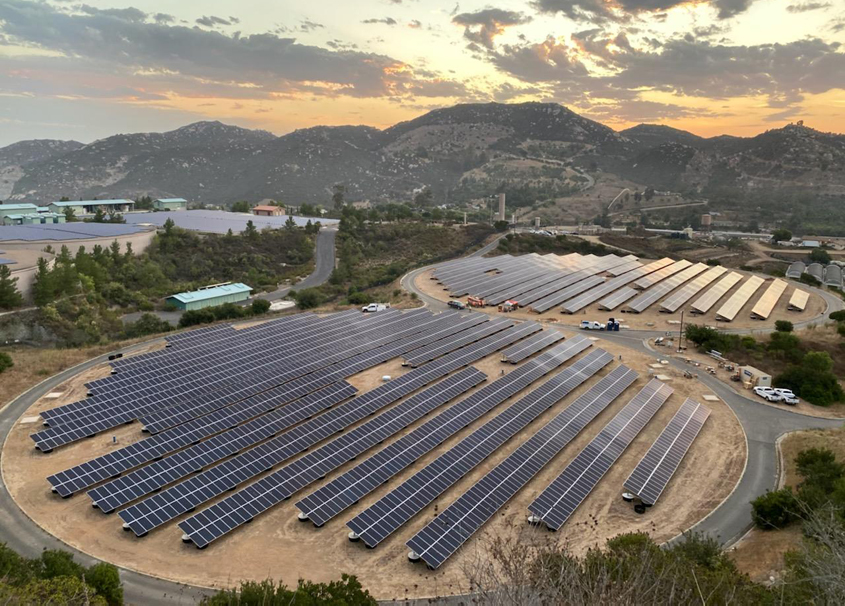
The Twin Oaks Reservoir dual solar array total production is roughly 3.6 mWh annually, enough to power 340 homes. Photo: Vallecitos Water District
While the solar power project cannot prevent the potential for power outages due to rolling blackouts, the project helps to add capacity to the power grid when it is needed.
“The District wants to publicly thank Terre Verde Renewable Partners, Holt Renewables, and Kenyon Energy for their valuable roles in the success of this project,” said Morgan. “We also want to acknowledge the above and beyond effort of the District’s inspections team.”
The Twin Oaks Reservoir dual array is expected to be completed in November 2020. The Lift Station #1 site is expected to be completed in February of 2021.

